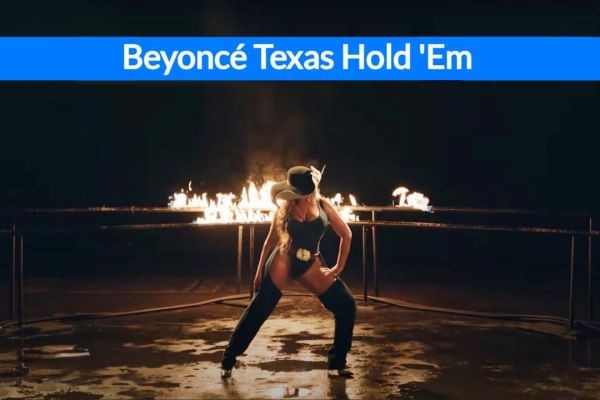Explore Napoleon Dynamite's quirky charm, inspired by Jared Hess's small-town roots and cinematic influences. Uncover the film's unique style and lasting impact now!
08/15/24 • 80 Views
Napoleon Dynamite's unique style was shaped by Jared Hess's experiences in Preston, Idaho, where small-town quirks and authentic narratives infused the film's character. You're seeing a fusion of personal history and influential cinematic styles from directors like Errol Morris and Wes Anderson, who've mastered marrying visual storytelling with deep thematic exploration. The characters' vividness, accentuated by thrift-store costumes, render them both relatable and uniquely memorable. The film's grassroots marketing only added to its charm, deeply resonating with a broad audience. Each element reflects a thoughtful blend of reality and cinema, promising deeper layers to uncover as you explore further.
Key Takeaways
- Jared Hess drew inspiration from his quirky upbringing in Preston, Idaho, infusing the film with authentic small-town idiosyncrasies.
- Influences from filmmakers like Errol Morris, Wes Anderson, and Todd Solondz shaped the film's visual and narrative style, bridging demographic gaps.
- Costume designs sourced from thrift stores underscored the characters' individuality and the film's commitment to authentic, relatable storytelling.
- The film's unique marketing strategy, led by Nancy Utley, utilized grassroots approaches, turning it into a cult phenomenon through personal audience engagement.
- Napoleon Dynamite challenges and humorously critiques rural American life, setting a new precedent for indie comedies in mainstream cinema.
Director's Personal Background
Jared Hess's upbringing in Preston, Idaho, significantly influenced his approach to creating the quirky and relatable characters seen in Napoleon Dynamite. Growing up in a small, tightly-knit community, Hess was surrounded by individuals whose eccentricities weren't just remarkable—they were the norm. This immersion in small-town quirks didn't just shape Hess's view of the world; it became the foundation of his creative expression. Your understanding of Hess's work deepens when you consider how these authentic characters mirror the genuine personalities Hess encounters daily. By transplanting these real-life eccentricities onto the screen, he crafted a world that resonates with sincere, unpolished charm.
This approach not only defines Hess's comedic sensibilities but also highlights his commitment to authenticity in storytelling. Moreover, Hess's background in independent filmmaking allowed him the freedom to explore these atypical characters without the constraints typically imposed by mainstream studios. This independence was essential in preserving the film's unique voice and tone, ensuring that every detail—from the dialogue to the set design—reflected his original vision. You can see how Hess's personal narrative and filmmaking approach converge to create a film that's as endearing as it's distinctive.
Influential Filmmakers
Drawing inspiration from the documentary style of Errol Morris and the distinctive aesthetics of Wes Anderson and Todd Solondz, Napoleon Dynamite showcases a unique visual and narrative style that bridges demographic gaps. Errol Morris's influence is evident in the film's unvarnished portrayal of its characters, drawing you into their world through a lens that captures the raw, unscripted feel of a documentary. This method allows you to connect deeply with characters like Pedro, enhancing the relatability despite the film's heightened stylization.
Wes Anderson's impact is visible in the meticulous composition of each frame, where symmetry and color play essential roles, creating a visually engaging world that feels both timeless and meticulously planned. This attention to detail pulls you into a carefully crafted universe, where even the smallest elements serve a purpose in the storytelling. Meanwhile, Todd Solondz's touch is apparent in the exploration of suburban ennui and the awkwardness of adolescence, themes that resonate throughout Napoleon Dynamite. The characters' struggles and triumphs mirror those found in Solondz's small-scale comedies, emphasizing that real life can be as quirky and unpredictable as any scripted narrative.
Through these influences, Napoleon Dynamite not only entertains but also reflects the quirky realities of everyday life, proving that small-scale comedies can indeed carry substantial thematic weight and broad appeal.
Character Development Insights
The nuanced development of characters in Napoleon Dynamite, influenced by real-life encounters of the filmmakers, enriches the film's authenticity and relatability. As you explore the character development process, you'll find that the filmmakers' personal experiences greatly shaped the portrayal of each character. This grounding in reality guarantees that despite their quirks, the characters resonate with audiences on a deeper level.
The evolution of Napoleon Dynamite's character exemplifies this approach. Initially envisioned as more of a caricature, Napoleon was refined through continuous collaboration between Jared Hess and Jon Heder. This partnership focused on creating a character who, while still eccentric, possessed a genuine and relatable depth. Traits like mouth breathing were deliberately emphasized, not just as comic relief but to highlight his status as an outsider, enhancing his unique persona.
This focus on authenticity didn't just apply to Napoleon but was a directive across the board. Actors were encouraged to bring elements of their personalities into their roles, fostering a sense of realness that cartoons or exaggerations couldn't achieve. It's this blend of the real and the quirky that makes the character development in Napoleon Dynamite so effective, ensuring that each character's journey is both believable and engaging.
Costume Design Choices
Many of the costume choices in Napoleon Dynamite, hand-selected by Jerusha Hess from thrift stores like Deseret Industries, were instrumental in defining the film's distinctive visual and thematic style. The deliberate selection of each piece not only added to the film's authenticity but also highlighted the quirky style that became synonymous with the film. As you dive deeper into the details, you'll see how these choices were more than just clothing; they were a narrative tool.
- Authenticity: By sourcing costumes from thrift stores, the film's wardrobe felt genuinely lived-in and unpretentious, mirroring the small-town setting and the down-to-earth characters.
- Character Personalities: Each costume piece reflected the characters' unique traits. Napoleon's moon boots, for instance, underscore his eccentric and oblivious nature.
- Visual Appeal: The distinctive apparel, like Pedro's 'Vote for Pedro' shirt, created a visual identifier that was both memorable and aesthetically fitting within the film's environment.
- Quirky Style: The ensemble of mismatched outfits, like Deb's side ponytail and large glasses, emphasized the film's overall theme of embracing individuality.
Through these meticulous costume design choices, the film not only entertained but also crafted a visual language that resonated with audiences, making the style of Napoleon Dynamite truly iconic.
Unconventional Marketing Strategies
Napoleon Dynamite's grassroots marketing strategies, led by Nancy Utley, played an essential role in transforming the film into a cult phenomenon. Under the banner of Fox Searchlight, Utley's innovative approach wasn't just about pushing ads; it was about creating a movement. By organizing hundreds of screenings nationwide, she enabled the film to resonate deeply with a broad spectrum of viewers, setting the stage for a diverse audience reach.
You'd find the essence of Utley's unconventional marketing in the way she distributed free merchandise. This wasn't merely promotional; it was strategic, fostering a personal connection between the film and its audience. The merchandise became symbols of belonging, tokens that fans carried and shared, spreading the film's quirky charm virally.
This strategic deployment of grassroots marketing underlines a significant shift. Instead of relying solely on traditional media buzz, Utley's tactics leveraged direct audience engagement to amplify word-of-mouth buzz, substantially impacting how small-scale comedies were perceived in Hollywood. The success of Napoleon Dynamite, attributable to these unique marketing strategies, demonstrates the power of thinking outside conventional promotional frameworks to engage with diverse audience demographics effectively.
Cultural and Demographic Appeal
Building on its grassroots marketing success, Napoleon Dynamite also captivated a broad audience spectrum through its nuanced portrayal of rural American life and idiosyncratic humor. This film, with its quirky characters and understated comedic style, uniquely bridged demographic divides, making it a cult classic respected across cultural backgrounds.
The film's appeal is rooted in several key elements:
- Relatable High School Experience: Despite the exaggerated personalities, the high school setting and experiences resonate universally, reminding viewers of their adolescent struggles and triumphs.
- Quirky Characters: Each character, from Napoleon himself to Uncle Rico, is meticulously crafted to defy conventional stereotypes, encouraging a broader identification and appeal.
- Cultural Commentary: Its caricature of rural America provides a gentle, humorous critique that many find endearing rather than alienating.
- Influence of Small-Scale Comedies: Following Napoleon Dynamite's success, Hollywood saw the potential in small-scale comedies to captivate a diverse fan base, leading to the production of films like Little Miss Sunshine and Juno.
Legacy and Continued Impact
While the film Napoleon Dynamite initially captivated audiences with its offbeat humor, its lasting legacy has reshaped the landscape of indie comedies and influenced cultural perceptions of rural America. Directed by Jared Hess and starring Jon Heder, the film premiered at the Sundance Film Festival, setting the stage for its journey as a cult classic. The quirky, underdog spirit of the film resonated deeply, inspiring a slew of indie comedies like Little Miss Sunshine and Juno, which similarly explore unique, nuanced characters and settings outside typical Hollywood fare.
You might find it fascinating that Preston, Idaho, the film's setting, has embraced its unexpected fame. Annually, the town hosts festivals celebrating the film, drawing fans who relish the film's charm and wish to connect with its universe. This pilgrimage-like behavior underscores the deep, personal connection many feel with the film's portrayal of outsider life in small-town America.
Furthermore, Hollywood has taken cues from Napoleon Dynamite in depicting Middle America, moving away from clichéd portrayals and towards more authentic, respectful representations. This shift is a testimony to the film's impact, proving that its influence extends beyond mere entertainment, shaping how stories are told and received in the broader cultural context.
Conclusion
In wrapping up, it's clear that 'Napoleon Dynamite' is nothing short of a cultural earthquake, its tremors still palpable years after its release. From the director's quirky vision to the outlandishly memorable costumes, each choice was a bold stroke of genius that carved out a new niche in film history. It's legacy? Monumental. It's more than a film; it's a blueprint for daring to be different in a sea of cinematic conformity. Immerse yourself, and you'll never view indie films the same way again.









